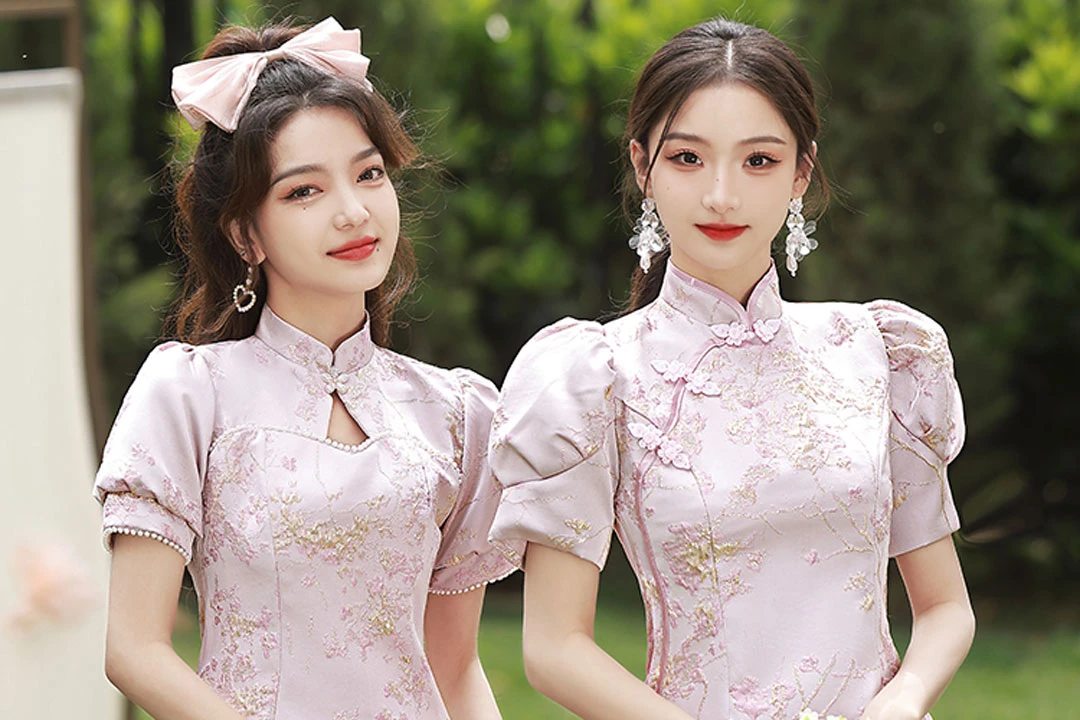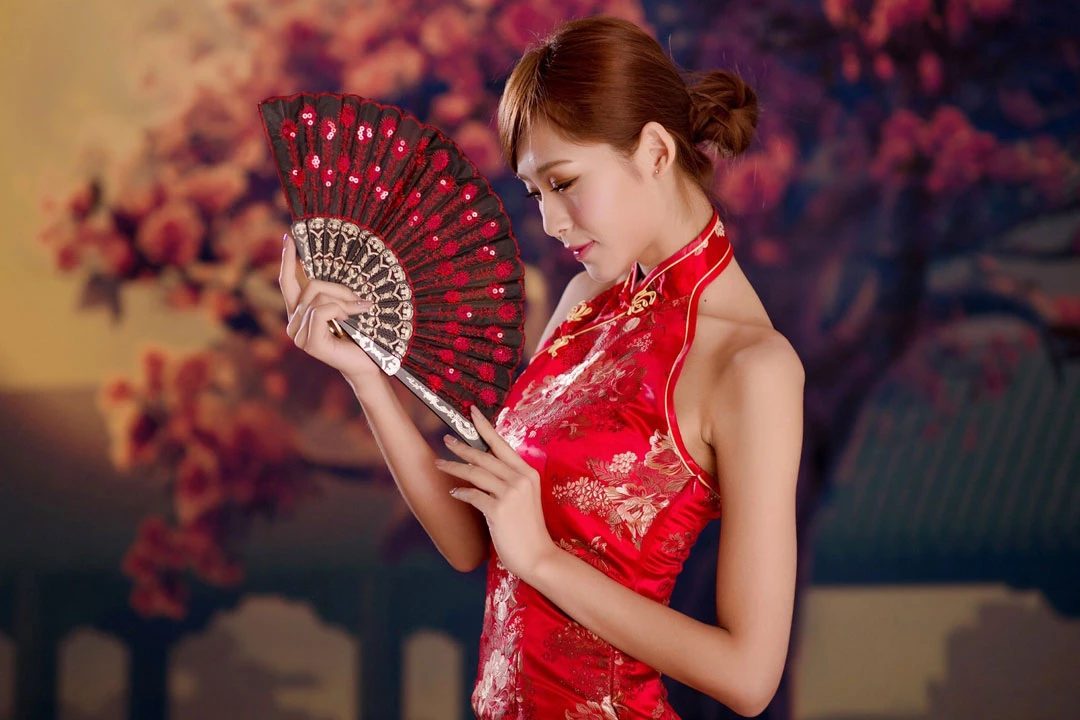The traditional clothing of China is a rich tapestry woven with history, symbolism, and cultural significance. Two iconic styles that often capture attention are the Qipao and Hanfu. While both are emblematic of Chinese heritage, they represent different eras, aesthetics, and cultural influences. In this exploration, we delve into the intricate details that differentiate the Qipao and Hanfu, uncovering the stories behind these two distinctive styles that have graced the Chinese sartorial landscape for centuries.
1. The Qipao: Timeless Elegance with a Modern Twist
The traditional Chinese cheongsam clothing is not part of the Hanfu system.
Cheongsam Origin and Evolution
The Qipao, also known as the cheongsam, boasts a relatively modern origin compared to the Hanfu. It emerged during the 1920s and 1930s in Shanghai and was popularized during a period of societal and cultural shifts in China. Influenced by the Manchu people’s clothing during the Qing Dynasty, the Qipao underwent transformations to become the form-fitting, high-necked garment recognized today.
Silhouette and Design
The Qipao is characterized by its sleek, body-hugging silhouette, typically featuring a high collar, cap sleeves, and a side-slit skirt. The dress emphasizes femininity while maintaining an air of modesty. Modern variations of the Qipao may include diverse fabrics, intricate embroidery, and contemporary design elements, making it a versatile garment suitable for various occasions.
Occasions for Wear
Traditionally worn by Chinese women, the Qipao is associated with formal occasions such as weddings, banquets, and important celebrations. Its enduring popularity lies in its ability to seamlessly blend traditional elegance with a touch of modern flair.
2. Hanfu: Reviving Ancient Chinese Elegance
Deep Roots in History
Unlike the Qipao, the Hanfu boasts a history dating back thousands of years to ancient China. It was the traditional attire worn by the Han Chinese people and evolved over various dynasties, reflecting the diverse fashions of each era.
The Hanfu’s design is rooted in the philosophy of Confucianism, emphasizing modesty, harmony with nature, and adherence to societal roles.
Diversity of Hanfu Styles
Hanfu is not a single garment but a category encompassing a wide array of styles. From the layered robes of the Tang Dynasty to the flowing sleeves of the Han Dynasty, each type of Hanfu is distinct, reflecting the fashion trends of its respective era.
The versatility of Hanfu allows wearers to choose styles based on personal preferences, occasions, or historical accuracy.
Revival in the Modern Era
In recent years, there has been a revival of interest in Hanfu, with enthusiasts advocating for its cultural preservation and contemporary relevance. Modern interpretations often blend traditional aesthetics with a touch of modern fashion, making Hanfu accessible to a wider audience.
3. Key Differences: Qipao vs. Hanfu
Silhouette and Fit
The most noticeable difference lies in the silhouette and fit. The Qipao is form-fitting, accentuating the curves of the body, while Hanfu typically features looser, flowing garments with a focus on layers.
Collar and Sleeves
The Qipao’s high collar and cap sleeves are distinctive features that set it apart. In contrast, Hanfu may have various collar styles, including cross-collars or straight collars, and sleeves that can range from wide and flowing to more fitted.
Occasions and Cultural Significance
The Qipao is often associated with more modern and formal occasions, reflecting the changing cultural landscape of 20th-century China. In contrast, Hanfu carries a deeper historical and cultural significance, often associated with traditional ceremonies, historical reenactments, or cultural events.
Variety and Adaptability
Hanfu, due to its diverse historical roots, offers a wide range of styles and adaptability. Each type of Hanfu can be chosen based on personal preference or the desire to connect with a specific historical period. Qipao, while adaptable in design, tends to maintain a more consistent silhouette.
4. Embracing Both Traditions: Modern Perspectives
Cultural Appreciation
In the modern era, individuals from diverse backgrounds appreciate both the Qipao and Hanfu for their unique aesthetics and cultural significance. The key is understanding and respecting the historical and cultural contexts that gave rise to each style.
Cross-Cultural Blending
Contemporary fashion often involves a fusion of styles, and both the Qipao and Hanfu have found places in global wardrobes. Designers and enthusiasts may create hybrid styles that blend traditional Chinese elements with modern fashion trends, fostering cross-cultural appreciation.
Personal Expression and Celebration
Whether choosing a Qipao for its sleek elegance or donning Hanfu to connect with ancient Chinese traditions, individuals use these garments as a form of personal expression and celebration. The diverse range of styles allows for a nuanced exploration of cultural heritage.
Conclusion
In comparing the Qipao and Hanfu, we uncover not only the distinct features that set them apart but also the shared appreciation for Chinese cultural heritage. The Qipao, with its modern elegance, and the Hanfu, rooted in ancient traditions, represent different chapters in China’s rich history. Today, they coexist as symbols of cultural continuity and adaptation, embraced by individuals around the world who seek to connect with the timeless beauty and significance of Chinese attire. Whether draped in the sleek lines of a Qipao or the flowing layers of Hanfu, individuals participate in a vibrant narrative that weaves together tradition, modernity, and the enduring allure of Chinese fashion.


